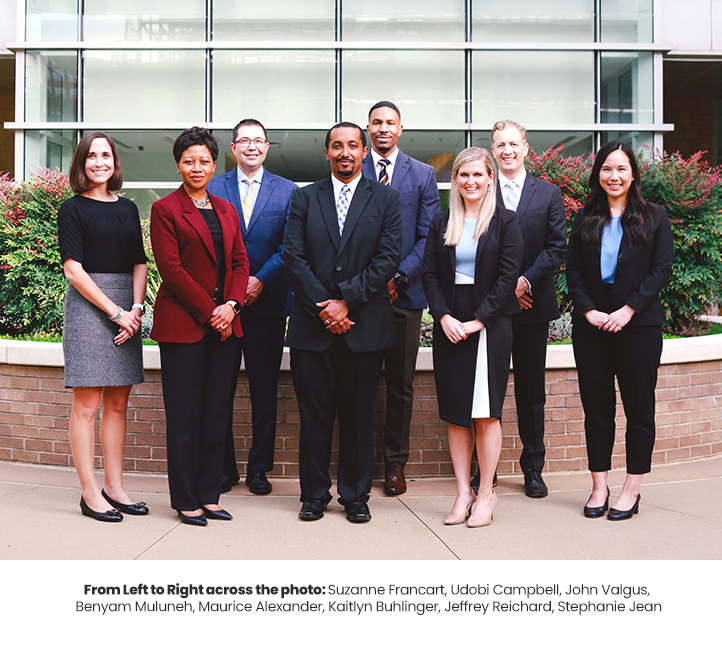Kaitlyn Buhlinger, Pharm.D., BCOP, CPP; John Valgus, Pharm.D., MHA, BCOP; Maurice Alexander, Pharm.D., BCOP, CPP; Suzanne Francart, Pharm.D., BCPS; Stephanie Jean, Pharm.D., M.S., BCPS; Jeffrey Reichard, Pharm.D., M.S., BCOP; Udobi Campbell, Pharm.D., M.B.A.; Benyam Muluneh, Pharm.D., BCOP, CPP
UNC Health,
Chapel Hill, North Carolina
Since the 1970s, the standard of care for acute myeloid leukemia (AML) patients has been inpatient cytotoxic chemotherapy; however, elderly and unfit AML patients had limited options due to their inability to tolerate intensive chemotherapy. Venetoclax, an oral BCL2 inhibitor, in combination with a hypomethylating agent was approved in late 2018 for AML treatment in elderly and unfit patients, drastically changing the treatment paradigm for this population. Due to a risk of tumor lysis syndrome (TLS), pre-treatment cytoreduction, uric acid lowering therapies, intravenous hydration, dosing ramp-up, drug interaction assessment, and close lab monitoring are critical components of care. This requires patients to routinely initiate treatment in the inpatient setting for the first week of therapy. Securing venetoclax insurance coverage authorization and ensuring drug affordability are additional obstacles to overcome to achieve rapid initiation of this therapy in the outpatient setting. Our institution’s clinical pharmacist-led program has helped ensure safe and efficient outpatient initiation of this regimen in eligible patients as well as inpatient cost avoidance. Key teams involved in the delivery of this service include our medication assistance program (MAP), in-house specialty pharmacy (SP), and other interdisciplinary team members.
The pharmacist-led program includes the clinical pharmacist (CP), who works directly with the leukemia providers to prepare chemotherapy orders, send prescriptions for oral chemotherapy and supportive care medications, provides patient education, and performs a comprehensive medication review to identify potential drug interactions prior to initiation of venetoclax. Sending the venetoclax prescription triggers the SP and MAP teams to initiate the medication fulfillment process. The CP sees the patient on Days 1, 8, and 15 of Cycle 1 to assess adherence, symptoms, and need for preventative antimicrobials and subsequent venetoclax dose adjustments, and works with the interdisciplinary team to identify and address TLS or other concerns.
Of 82 AML patients started on a venetoclax-based regimen, 47 (57%) were initiated outpatient, with 83% remaining outpatient for the entirety of the first week. Of 47 outpatients, there was only 1 episode of TLS (2.1%) resulting in hospitalization without further consequences or therapy delays. The median turnaround time from generation of the venetoclax prescription to approved authorization and securing copayment/insurance coverage was 3 days (median range 0-37 days), with an estimated $2,130,645 of drug financial assistance provided to patients. By keeping 39 patients outpatient for the first week of treatment, 273 inpatient hospitalization days were prevented, an estimated $1,016,691 in cost avoidance. The clinical best response, defined as achieving < 5% blasts on a bone marrow biopsy in Cycle 1 or Cycle 2, were 60.9% and 52% for first-line and relapsed/refractory indications, respectively comparing favorably to real world response rates.
A pharmacy-led venetoclax outpatient initiation protocol has proven successful for the safe, efficient, and effective initiation of therapy, in a lower cost setting. The positive results of this study highlight the impact that an advanced pharmacist in partnership with key health system stakeholders can have on clinical and financial outcomes and encourage the importance of having CP leadership in optimizing complex and costly regimens.

